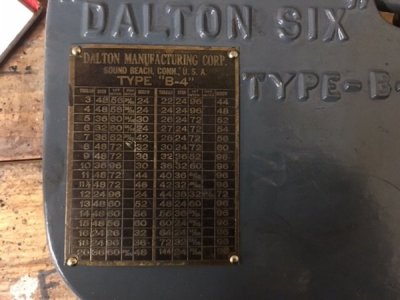Arrmo,I pulled the spindle off last night. The babbit looked OK, but there were no more shims to remove play, the fiber washers were pretty beat up as well. The fiber washer will be replaced with needle bearings. But I don't know what I'm going to do with the babbit. I don't like the idea of loose rollers riding on the cast iron as a replacement, I may attempt to peen the babbit or file down the cap to get more room for adjustment. Picture of this may not be up until tomorrow.
In your photos, that counter shaft part you have was part of an over head clutch and counter shaft. You are missing a lot of it and probably would not want to use it anyway. It is large and primitive.( although it was state of the art in 1920 or so).
You could use the 3 step flat belt pulley off that assembly to make a counter shaft, but it would be easier and probably just as inexpensive to pick up a SB counter shaft off ebay.
If there is no play in your spindle bearings, just put the caps back . If needed you could file a few thousandths of the caps to tighten them, but if any looser , you need to look at replacing them. ( There aren't many folks around anymore that can or will do babbit work.
Your lathe should clean up nicely and make a nice lathe for hobby work.

